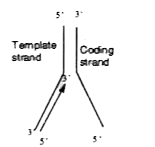Atavistic organs indicate
Convergent evolution
Parallel evolution
The evolution from remote ancestors
Homoplasy
The correct Answer is:C
Step-by-Step Solution:
1. Understanding Atavistic Organs: Atavistic organs are those structures that reappear in an organism that were present in its remote ancestors but are not typically found in the more recent generations. This phenomenon is known as atavism.
2. Analyzing the Options:
- Option A: Conversion Evolution: This refers to different species developing similar traits independently due to similar environmental pressures, despite having different evolutionary origins. This does not relate to the reappearance of ancestral traits, so this option is incorrect.
- Option B: Parallel Evolution: This involves two independent species evolving similar traits due to similar environmental conditions. Like conversion evolution, this does not involve the reappearance of ancestral traits, making this option also incorrect.
- Option C: Evolution from Remote Ancestors: This option suggests that atavistic organs indicate a return to traits from distant ancestors. This aligns with the definition of atavism, making this option correct.
- Option D: Homoplasy: This refers to traits that are similar due to convergent evolution rather than shared ancestry. Since atavistic organs are about ancestral traits reappearing, this option is also incorrect.
3. Conclusion: The correct answer is Option C: Evolution from remote ancestors, as atavistic organs indicate the reappearance of ancestral characteristics in modern organisms.
---
- Option A: Conversion Evolution: This refers to different species developing similar traits independently due to similar environmental pressures, despite having different evolutionary origins. This does not relate to the reappearance of ancestral traits, so this option is incorrect.
- Option B: Parallel Evolution: This involves two independent species evolving similar traits due to similar environmental conditions. Like conversion evolution, this does not involve the reappearance of ancestral traits, making this option also incorrect.
- Option C: Evolution from Remote Ancestors: This option suggests that atavistic organs indicate a return to traits from distant ancestors. This aligns with the definition of atavism, making this option correct.
- Option D: Homoplasy: This refers to traits that are similar due to convergent evolution rather than shared ancestry. Since atavistic organs are about ancestral traits reappearing, this option is also incorrect.
Topper's Solved these Questions
- EVOLUTIONBOOK - AAKASH SERIESCHAPTER - EVOLUTIONEXERCISE - EXERCISE -II (ADAPTIVE RADIATION )
5 Videos
- EVOLUTIONBOOK - AAKASH SERIESCHAPTER - EVOLUTIONEXERCISE - EXERCISE -II (BIOLOGICAL EVOLUTION(THEORIES OF EVOLUTION & MECHANISM OF EVOLUTION))
8 Videos
- EVOLUTIONBOOK - AAKASH SERIESCHAPTER - EVOLUTIONEXERCISE - EXERCISE -II (ORIGIN OF LIFE AND EVOLUTION OF LIFE FORMS)
18 Videos
- DIGESTION AND ABSORPTIONBOOK - AAKASH SERIESCHAPTER - DIGESTION AND ABSORPTIONEXERCISE - Exercise - III (Previous AIPMT/NEET Questions)
24 Videos
- EXCRETORY PRODUCTS AND THEIR ELIMINATIONBOOK - AAKASH SERIESCHAPTER - EXCRETORY PRODUCTS AND THEIR ELIMINATIONEXERCISE - EXERCISE - III (PREVIOUS AIPMT/NEET QUESTIONS)
20 Videos
Similar Questions
Knowledge Check
Niche overlap indicates
AMutualism between two speciesBActive cooperation between two speciesCTwo different parasites on the same hostDSharing of one or more resources between two species
Niche overlap indicates
View Solution
This graph indicates:
View SolutionR.Q. indicates
View Solution
This diagram indicates
View SolutionIn the binomial system of nomenclature, the first word indicates the ......... of the organism.
View SolutionIn an ECG, the depolarization of atria is indicated by
View SolutionKi indicates
View Solution
